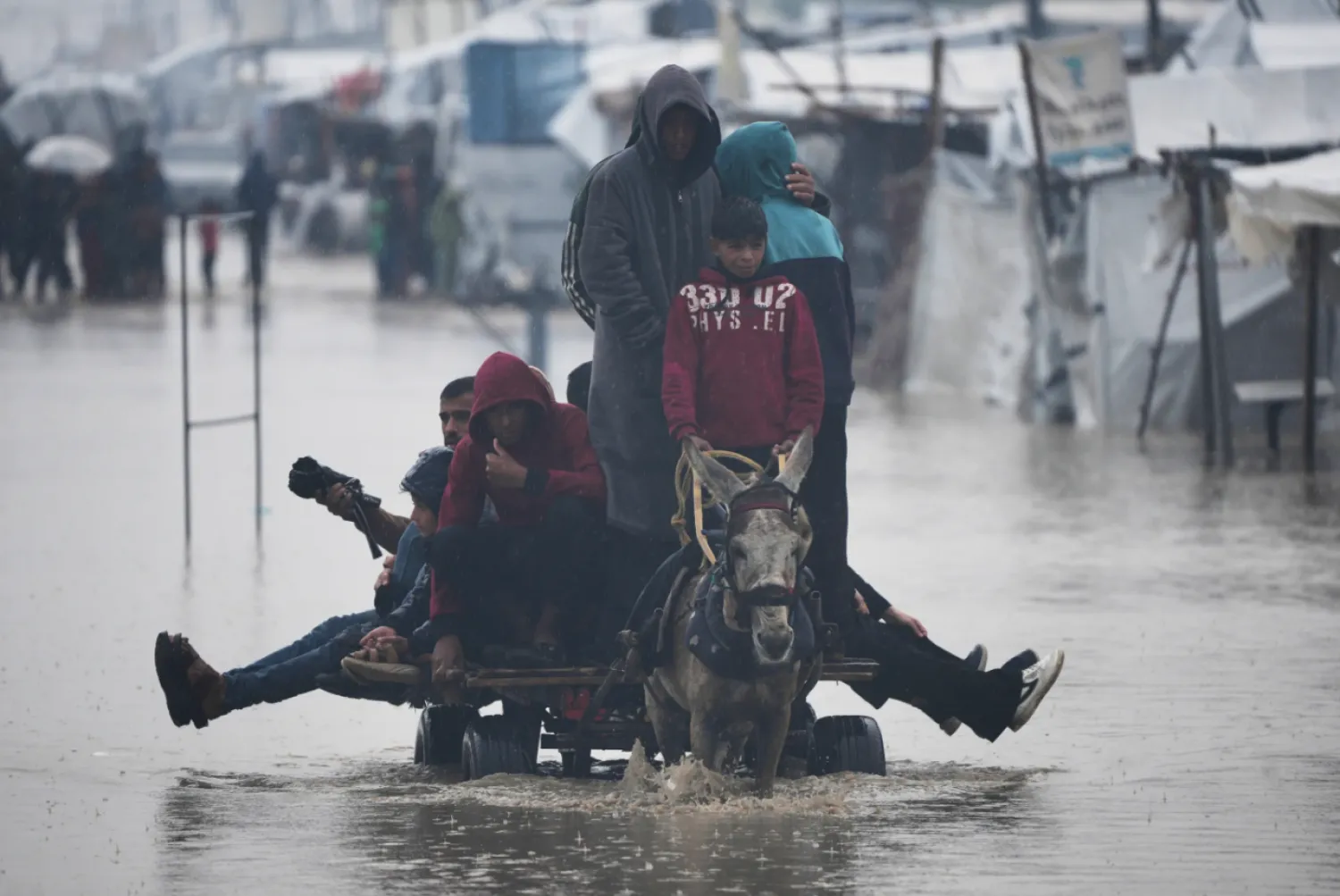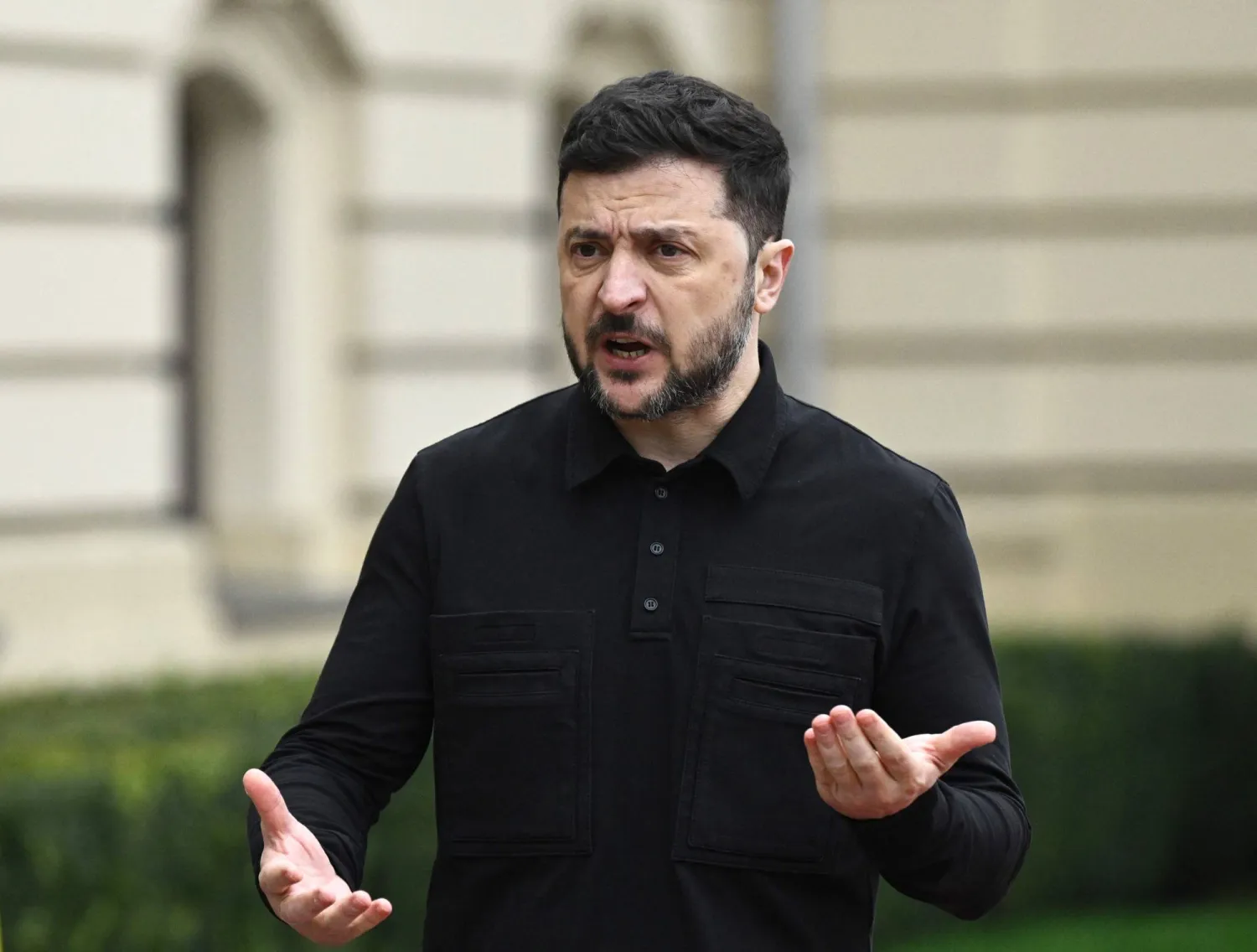On a recent school day, the Rene Mouawad High School in Beirut was empty, its classrooms dark, just like all of Lebanon’s public schools have been for most of the past three months. Its striking teachers were protesting in front of the Education Ministry, not far away.
About a hundred teachers joined the demonstration outside the ministry, blocking traffic and holding placards demanding pay raises. “We are done with charity,” said Nisreen Chahine, the head of the union for contractor teachers.
“We are not negotiating anymore. They should either rightfully pay us or go home,” The Associated Press quoted Chahine as saying.
The teachers gave speeches demanding officials come out and talk to them. But as usual in these regular protests, no one from the ministry emerged. After several hours, the teachers packed up and went home.
Lebanon’s schools are crumbling under the weight of the country’s economic collapse as the political leadership — which caused the crisis through decades of corruption and mismanagement — balks at taking any measures to resolve it. Since the meltdown began in late 2019, over three-quarters of Lebanon’s 6 million people have been plunged into poverty, their assets evaporating as the currency’s value shrivels and inflation rises at one of the world’s highest rates.
Most of the country’s children have not been in school for months — many since even before teachers, who say they can no longer live on their salaries, went on strike in December. Lebanon was once known for producing a highly skilled, educated work force. But now an entire generation is missing out on schooling, wreaking long-term damage on prospects for the country’s economy and future.
Teachers called their strike because their salaries, in Lebanese pounds, have became too low to cover rent and other basic expenses. The pound has gone from 1,500 to the dollar before the crisis to 100,000 to the dollar currently. Most teachers are now paid the equivalent of about $1 an hour, even after several raises since 2019. Grocery stores and other businesses now usually price their goods in dollars.
Teachers are demanding adjusted salaries, a transportation stipend, and health benefits. The government only offered to partially cover transportation, saying it didn’t have the budget for more. Though schools partially reopened last week after some teachers returned to work, most chose to continue striking.
Even before the crisis, Lebanon’s investment in public schools was limited. In 2020, the government’s spending on education was equivalent only to 1.7% of Lebanon’s GDP, one of the lowest rates in the world, according to the World Bank. The 2022 budget allocated 3.6 trillion Lebanese lira for education — the equivalent of around $90 million at the time the budget was passed in October, less than half the $182 million budget on education from a donor-funded humanitarian program.
Instead, the government has relied for years on private and charity schools to educate children. Humanitarian agencies paid to cover salaries and keep decrepit infrastructure functioning. Two-thirds of Lebanese children once went to private schools, but hundreds of thousands dropped out in recent years because private schools have had to increase tuition to cover soaring costs. Public and private schools struggle to keep lights on as fuel costs mount.
Even before the strike, more than 700,000 children in Lebanon, many of them Syrian refugees, were not in school because of the economic crisis. With the strike, an additional 500,000 joined their ranks, according to UNICEF.
“It means we now see children ages 10, 12, 14 and they are not able to even write their own names or write basic sentences,” Ettie Higgins, UNICEF deputy representative for Lebanon, told the AP. UNICEF said that last week it gave almost $14 million to help more than 1,000 public schools pay staff.
Rana Ghalib, a mother of four, said it makes her anxious to see her children at home when they should be in school. Her 14-year-old son had to repeat the 6th grade because he has fallen behind during previous disruptions.
“The classrooms are basically empty because teachers are demanding their rights and they’re dark because there is no fuel,” Ghalib told the AP.
The international community has been pushing Lebanon’s leaders to carry out wide-ranging reforms in the economy, financial system and governance in order to receive a $3 billion bailout package from the International Monetary Fund and unlock development aid. The political elite, which has run the country since 1990, has stalled — because, critics say, reforms would undermine its grip on power and wealth. Amid political deadlock, there hasn’t been a president for months, and the government only functions in a limited caretaker capacity.
Education, meanwhile, is joining banks, medicine and electricity in the ranks of Lebanon’s failing institutions. That could cause long-term damage: Lebanon has traditionally relied on its educated and skilled diaspora population abroad to send remittances back home to support families, invest and feed dollars into the banking system. The exodus of skilled people skyrocketed during the economic crisis, leaving remittances as Lebanon’s last economic lifeline.
Hussein Cheaito, an economist and nonresident fellow at The Tahrir Institute for Middle East Policy, a Washington-based think tank, says the crippled education system will further “deteriorate the social fabric” of Lebanon and deepen poverty.
“This will have a effect on the longer-term growth of the economy,” he told the AP. “This means there will be less access to jobs in the future … (and) weaken the labor market in general.”
Ghalib, meanwhile, checks on her children, who are watching TV and playing with their cellphones at a time when they would usually be studying. Even her 9-year-old daughter is aware that her future is in jeopardy, she said.
“My youngest daughter tells me, ‘I want to be a doctor, but how can I do that if I’m sitting at home?’” Ghalib said. “I don’t know what to tell her.”









